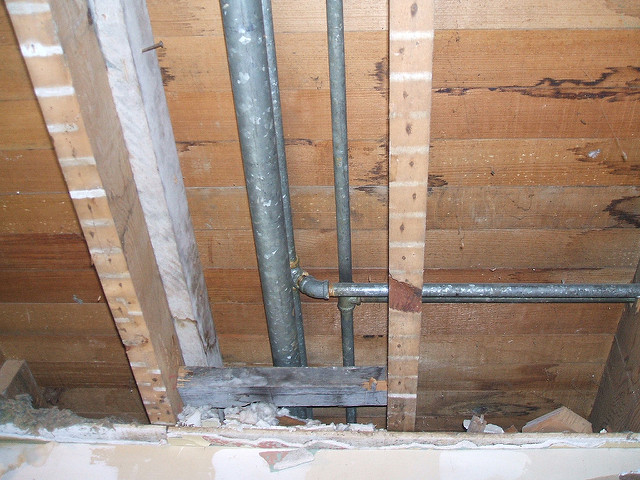Just how to Locate and Fixing Water Leaks-- A Comprehensive Overview
Just how to Locate and Fixing Water Leaks-- A Comprehensive Overview
Blog Article
On this page in the next paragraph you might get a bunch of reliable expertise concerning Finding hidden leaks.

Early discovery of dripping water lines can minimize a prospective disaster. Some tiny water leakages may not be noticeable.
1. Check Out the Water Meter
Every home has a water meter. Inspecting it is a surefire way that helps you find leakages. For beginners, turn off all the water resources. Ensure no one will flush, use the faucet, shower, run the washing device or dishwashing machine. From there, most likely to the meter as well as watch if it will change. Because nobody is using it, there should be no motions. If it moves, that shows a fast-moving leakage. If you discover no changes, wait an hour or 2 and also examine back once more. This implies you might have a slow leak that could also be below ground.
2. Examine Water Intake
If you identify abrupt modifications, regardless of your intake being the very same, it means that you have leakages in your plumbing system. An abrupt spike in your expense shows a fast-moving leakage.
Meanwhile, a stable boost each month, despite the exact same habits, shows you have a sluggish leakage that's also slowly intensifying. Call a plumber to extensively examine your residential or commercial property, especially if you feel a warm area on your flooring with piping underneath.
3. Do a Food Coloring Test
30% comes from bathrooms when it comes to water intake. Test to see if they are running appropriately. Decline flecks of food shade in the container as well as wait 10 mins. If the color in some way infiltrates your dish during that time without flushing, there's a leak between the storage tank as well as bowl.
4. Asses Outside Lines
Do not neglect to inspect your outdoor water lines as well. Test spigots by attaching a garden pipe. Must water leak out of the connection, you have a loosened rubber gasket. Replace this and also make sure all links are tight. It will help get it professionally took a look at as well as preserved yearly if you've obtained a lawn sprinkler system. One small leak can squander lots of water and also increase your water expense.
5. Examine as well as Assess the Scenario
House owners ought to make it a habit to examine under the sink counters as well as even inside cabinets for any kind of bad odor or mold development. These 2 red flags show a leak so punctual attention is needed. Doing regular assessments, even bi-annually, can conserve you from a significant problem.
A lot more significantly, if you recognize your residence is currently old, keep a watchful eye on your heaters, hoses, pipelines and so on. Check for discolorations and also deteriorating as a lot of appliances and also pipelines have a life span. They will additionally normally deteriorate because of wear and tear. Don't wait for it to escalate if you believe dripping water lines in your plumbing system. Call a specialist plumber as soon as possible so you do not wind up with a terrible mess in your house.
Early detection of dripping water lines can minimize a prospective catastrophe. Some small water leaks may not be noticeable. Examining it is a guaranteed means that assists you uncover leaks. One small leak can squander lots of water as well as increase your water expense.
If you think leaking water lines in your plumbing system, do not wait for it to intensify.
WARNING SIGNS OF WATER LEAKAGE BEHIND THE WALL
PERSISTENT MUSTY ODORS
As water slowly drips from a leaky pipe inside the wall, flooring and sheetrock stay damp and develop an odor similar to wet cardboard. It generates a musty smell that can help you find hidden leaks.
MOLD IN UNUSUAL AREAS
Mold usually grows in wet areas like kitchens, baths and laundry rooms. If you spot the stuff on walls or baseboards in other rooms of the house, it’s a good indicator of undetected water leaks.
STAINS THAT GROW
When mold thrives around a leaky pipe, it sometimes takes hold on the inside surface of the affected wall. A growing stain on otherwise clean sheetrock is often your sign of a hidden plumbing problem.
PEELING OR BUBBLING WALLPAPER / PAINT
This clue is easy to miss in rooms that don’t get much use. When you see wallpaper separating along seams or paint bubbling or flaking off the wall, blame sheetrock that stays wet because of an undetected leak.
BUCKLED CEILINGS AND STAINED FLOORS
If ceilings or floors in bathrooms, kitchens or laundry areas develop structural problems, don’t rule out constant damp inside the walls. Wet sheetrock can affect adjacent framing, flooring and ceilings.
https://www.servicemasterbyzaba.com/blog/how-to-detect-water-leakage-in-walls/

We were made aware of that write-up about Hacks to detect leaks through someone on another website. You should take the time to promote this blog if you liked it. Thank you for your time. Please check up our website back soon.
Report this page